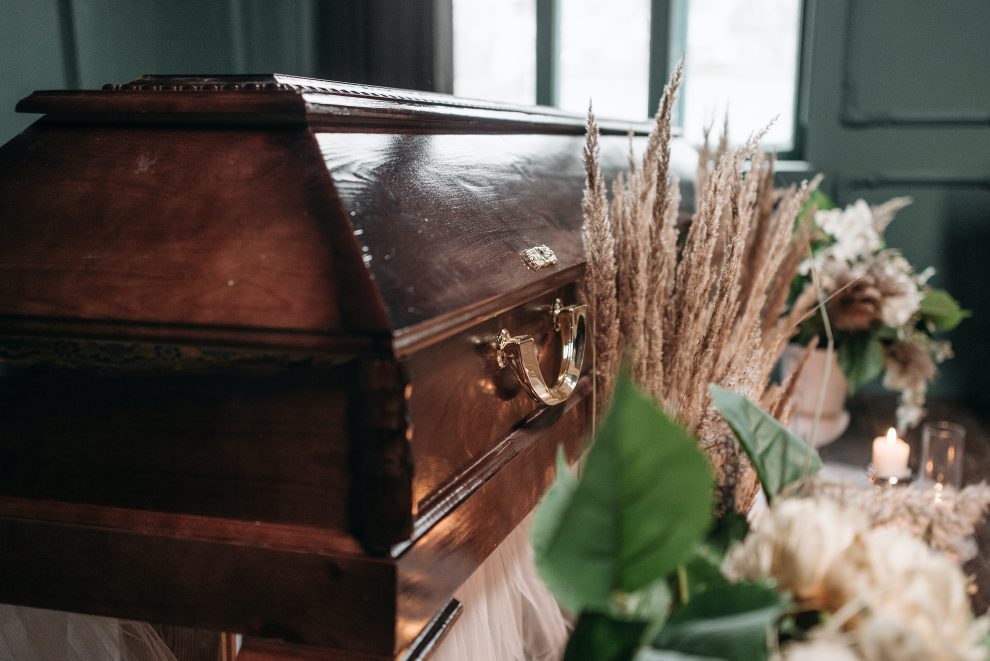It’s time to resurrect Catholic wisdom about the art of dying.
While most voters will be eagerly awaiting the results of this month’s presidential election, the Massachusetts ballot will have a less publicized decision for voters to consider: whether to join Oregon and Washington state in allowing terminally ill citizens to receive a prescription to end their lives. Richard Wesley, an Oregon physician with amyotrophic lateral sclerosis—Lou Gehrig’s disease—who has already secured his prescription for a life-ending dose of barbiturates, summed up his reasoning in The New York Times: “It is my death, and it should be my choice.”
Both individually and collectively, the U.S. bishops have opposed laws allowing the terminally ill to end their lives, not only because of Catholic teaching but also out of the concern that the elderly, poor, and disabled may feel pressured to end their lives for fear of being a financial or personal “burden” to loved ones. The U.S. bishops’ 2011 statement To Live Each Day with Dignity says: “People who request death are vulnerable. They need care and protection. To offer them lethal drugs is a victory not for freedom but for the worst form of neglect.”
Difficult decisions surrounding death take place, however, at great distance from the ballot box or the legislative chamber. A terminally ill person is unlikely to be swayed by bishops or lobbyists, and the anticipation of unmanageable pain or complete dependence on others is enough to convince many that physician-assisted suicide should be a legal option for the dying. So while legal efforts are worthwhile, what is even more necessary is the recovery of the Catholic tradition of preparing for death as a spiritual practice, one that begins well before death’s approach so it can bear fruit when the hour comes.
That’s a hard sell in a culture that does everything possible to deny death. But it was not so long ago that a prayer once taught to children—“Now I lay me down to sleep”—reflected the reality of death’s nearness.
My grandfather, now 99, tells of his younger brother who complained of a stomachache one afternoon and was dead the next morning. Their mother died in her 30s of tuberculosis.
Catholic tradition has long contemplated our inevitable encounter with death, especially in times of crisis. The plague epidemics of the European Middle Ages sparked the creation of beautifully illustrated books to aid those nearing death—the ars moriendi or “art of dying”—which detailed the elements of a “good death,” warning against temptations such as despair and providing guidance for family and friends at the deathbed. These guides were extremely popular, perhaps a sign that our medieval ancestors were a little more realistic about our final outcome than we are today.
Such wisdom is not lost to the ages; it is alive and well among Catholics today. A friend’s nearly grown children joke that they’ve been to more wakes than all their peers combined; they were never “sheltered” from the reality of death. Another friend revisits her will and medical directives each November, aware that some day she will take her place among the saints and souls whose feasts mark the beginning of the month.
My own Catholic comfort with death grew by serving funerals as a young teenager, where the beauty of the liturgy and the grace and care of my pastor somehow made me confident that death was truly a new beginning.
Such witness is powerful testimony to the enduring wisdom of the Catholic art of dying and could be our finest response to denial of death that permeates our culture: Our dignity is in no way diminished by the weakness, dependence, and frailty that heralds death’s approach. Indeed, it is perhaps then that we may come to our full stature as human beings, discovering that our “control” over death is not the manner or time of its coming, but the freedom to surrender our last breath in gratitude and hope, confident that the one who gave us life awaits us beyond the veil.
This article appeared on the November 2012 issue of U.S. Catholic (Vol. 77, No. 11, page 8).
Image: Pavel Danilyuk via Pexels












Add comment